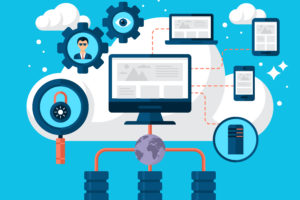You may know you can save money by hiring a data analyst and investing in an ERP. But that’s just the beginning.
By understanding the field of business intelligence, you can harness the right tools, software, and professionals to take your business’ use of data analytics to the next level.
Here’s what you need to know.
Understanding Business Intelligence
Business Intelligence (BI) is a technology-driven process that encompasses many different tools and methods. After business data is collected, it can be used for visualizations, dashboards, and reports.
But collecting data isn’t enough. After you collect data for your business, you’ll usually need the help of a software program or a data analyst to make sense of it. The software or analyst can create queries to display the results you’re looking for, validate data to remove any junk data, or prepare charts and graphs.
Business Intelligence bridges the gap between analytical data and end-users. Real business intelligence occurs when managers, stakeholders, and day-to-day operations employees all understand what the data is saying.
How Business Intelligence Helps
Business intelligence can help improve your company’s business practices, especially in the fields of marketing and human resources. Marketing data analytics explores which advertising methods are most effective, and can help you eliminate excess spending. Conversely, analyzing your human resources data can demonstrate which employees are performing the best and how much it costs to acquire other ones.
Collecting data and identifying trends can help key decision-makers with long-term and short-term planning. Ideally, you’ll want to visualize collected data promptly, so managers can act on issues as they arise.
Here are some other potential ways business intelligence can help:
- Accelerating and improving decision-making.
- Optimizing internal business processes.
- Increasing operational efficiency.
- Spotting business problems that need to be addressed.
How to Harness Business Intelligence
Want to pursue business intelligence for your company? Follow these steps to get started.
1) Establish what you want to measure. Do you want to measure your HR department’s efficiency? How about discovering your marketing team’s most effective ads? If you’re in the warehousing or logistics business, you may want to explore your pick times and load times. Regardless, business intelligence works best when you go in with a plan.
2) Establish how to measure it. Data analysts accomplish more with automated sources of data. If you can automate data collection, you’re better off. Automated data is typically uniform and easy to work with; data entered by hand often has errors that make it difficult to report on. For automated data collection, look to ERP software or machines.
3) Visualize. Data is useless if you don’t use it. Have a data analyst create visualizers or reports that clearly explain underlying trends and importance. From there, it’s up to managers and decision-makers to use the data to form insights and respond to problems.
Need help with your business intelligence? Contact Vodigy today! Our managed IT services and technology consulting help businesses like yours step into the future.




